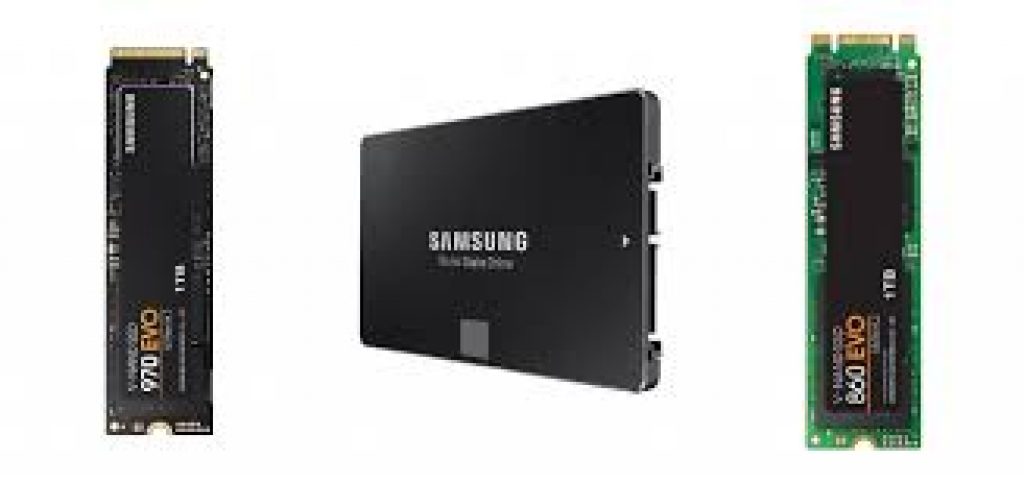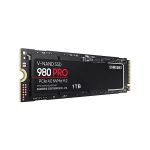Selecting the right SSD also known as a solid-state drive suitable for your specific needs and system is essential if you are looking for the most powerful gaming PC. A slow storage device often results in a major bottleneck that forces your processor to consume clock cycles just waiting on data to be crunched.
To speed up the rate of your writing and reading, you’ll need a top-notch SSD. To determine which is the most efficient SSD that we can test, we run tests on dozens of drives every year. We present the Best M.2 SSds drives here.
Best M.2 SSD in the Market: Top 7 Picks
| Ranking | Best M.2 SSDs | Reviews |
| 1. | Corsair Force MP600 | 5 out of 5 |
| 2. | Samsung 980 Pro | 5 out of 5 |
| 3. | Samsung 970 Pro | 4 out of 5 |
| 4. | Sabrent Rocket Q4 | 4 out of 5 |
| 5. | Adata XPG SX8200 Pro | 4 out of 5 |
| 6. | WD Blue SN550 | 4 out of 5 |
| 7. | Adata XPG S40G | 3 Out of 5 |
Top Buys of Best M.2 SSDs in 2022
1. Corsair Force MP600
Anyone looking for a speedy PCIe 4.0 SSD to play games or for professional use which isn’t as expensive as the best Samsung as well as Western Digital models should check out the Corsair Force MP600. It boasts speeds of up to 4,250MB/s and the ability to read up to 4,950MB/s real-time performance that matches the advertised speeds.
Noticeably less expensive, you receive an excellent heatsink in the MP600 as well as the same warranty of five years.. For alternatives to the MP600, the Gigabyte AORUS NVMe Gen4 is an excellent option. It is about the same price as the MP600, it has similar performance, and a copper heatsink that is pre-installed in the SSD.
2. Samsung 980 Pro
Samsung 980 Pro
0.87 x 3.15 x 0.94 inches
Flash Memory Size: 1
If you’re looking for the most efficient and most powerful NVMe SSD available, there’s only one option. Samsung 980 Pro. It comes with the most efficient performance on a PCIe 4.0 SSD along with an amazing array of additional features. The speed of transfer is comparable to that of PS5 (7,000 Mb/s reading & 5,000MB/s writing) and paired with technology like GPU Direct Storage from Nvidia. Also, this SDD could provide significant reductions in the loading of games.
However, that won’t be the case for quite a while, therefore, for the time being you’ll only see some speedier loading times in games as well as in loading an OS. In terms of the additional options, first you’ll receive the 256-bit AES encryption to keep your data secure. Samsung Magician is one of the top applications to monitor and benchmark SSDs. In addition, you receive the warranty for five years.
The 980 Pro also includes a new kind of SSD controller, and the drive has a long-lasting endurance due to the use of the memory block TLC. The endurance could have been improved in light of the price, which is perhaps the most significant drawback of the solid state drive.
If you’re looking for almost the same performance but in larger capacity, the recently launched Western Digital SN850PCIe 4.0 provides a little more write speed but is priced around the same amount as the 980 Pro. Additionally, the SN850 is available with a 2TB model, while the Samsung model is 1TB.
3. Samsung 970 Pro
Samsung 970 Pro
M.2 2280 PCIe Solid Drives
0.87 x 3.15 x 0.09 inches
The Samsung 970 Pro is the most efficient PCIe 3.0 M.2 SSD available today. With speeds up to 3,500MB/s in sequential read, and as high as 2,700MB/s in sequential write, it’s not the fastest PCIe 3.0 SSD available on the market. But, due to Samsung choosing to use MLC flash memory, it’s the most durable.
If you’re not looking to shell out the massive price for the 970 Pro, look into the Samsung 970 Evo Plus. It has slightly faster rates than 970 Pro. However, it utilises TLC rather than MLC flash memory. This results in lower endurance over the Pro version , but for those who are regular users, it won’t even get close to the limit for writing on this SSD.
Overall, this 970 Evo Plus is a much better option than that of the 970 Pro unless it is an extremely durable SSD that can handle extreme write-heavy operations
4. Sabrent Rocket Q4
If you require a large capacity M 2 SSD with a capacity greater than 2TB, and also supporting PCIe 4.0, then this Sabrent 4TB Rocket Q4 is the ideal choice. It’s built around QLC memory, which implies less endurance. Therefore, we recommend this one specifically for applications that require a lot of reading like operating media servers.
For performance, it’s great for a PCIe 4.0 SSD. It also comes with the free SSD managing software by Sabrent that is quite efficient & helpful. Then, there’s the variant of the SDD which has a nice and sturdy heatsink. We would recommend it if you don’t already have an M 2 drive heatsink in your motherboard.
We believe you are a Gaming Enthusiast, You Might like Best PCIe WiFi Cards
5. Adata XPG SX8200 Pro
Adata XPG SX8200 Pro
3.15 x 0.87 x 0.14 inches
Flash Memory Size: 1
Its Adata XPG SX8200 Pro is without doubt the best value for money PCIe 3.0 NVMe SSD that you can locate. Its speed is 3.500MB/s in reading, and up to 3,500MB/s when writing. This SSD is very comparable in comparison to Samsung 970 Evo Plus while being priced 20 % less. When we consider the 2TB version, it is priced more than 40 percent less and is a bargain for this kind of performance. The TLC memory is fairly good, but not extraordinary. A five-year warranty is always a welcome feature to have.
Another alternative for the XPG SX8200 Pro would be the Western Digital Black SSN750, but it’s only suitable for capacities that exceed 1TB. If you’re looking to buy an extremely fast 2TB PCIe 3.0 SSD, you should definitely consider the SX8200 Pro as it’s much less expensive and has significantly better performance, particularly in the case of copying big files.
6. WD Blue SN550
Anyone looking for a low-cost PCIe 3.0 NVMe SSD for gaming with outstanding endurance and performance must look at the series of WD Blue M.2 SSDs. They come in different capacities and come at reasonable prices that are close to SATA SSD costs.
The price is low, which means lower efficiency (up at 2.400MB/s read speeds & as high as 1.750MB/s speed of writing) but also smaller write caches, which can cause slower speed of transfer when moving large files.
The memory utilised is TLC that provides great endurance for the majority of users. Additionally, the cost for the version with 1TB of this SSD is very competitive. In comparison, the Mushkin Pilot-E has faster performance and a larger write cache, and is priced around ten percent more than the 1TB version. If you are able to spare additional cash then the Pilot-E might be a better option.
7. Adata XPG S40G
If you’re not content with RGB, the most affordable option to put some sparkle over the M.2 SSD is to connect either of these RGB heatsinks to a high-quality M.2 SSD’s thermal pad. However, if you’re looking for the best M.2 SSD with a preinstalled RGB heatsink, you should consider the Adata XPG S40G. It’s a powerful PCIe 3.0 SSD that offers decent performance, as well as quite an attractive RGB effect. It will look fantastic if coupled with an RGB motherboard.
The outstanding performance comes with a price that is attractive, which makes this SSD an excellent value option regardless of the model you choose. The price of the model with 4TB capacity is shockingly affordable considering the fact that TLC flash memory has been utilised in this model. The 4TB version of this SSD is among the most powerful capacity SSDs available.
If you’re looking for a higher capacity SSD, buy this one and then disable the RGB effect off. This way, you’ll get 4TB of TLC storage with speeds that are comparable to flagship models for an amount equivalent to 4TB QLC SSD which is a fantastic deal. Adata is also secured with a warranty of five years.
Shopping Tips To Buy Best M.2 SSD in 2022

Physical Size
Check that the width, and, in particular, the length will fit into the available space on the drive. The majority will be 22mm wide, however the length will vary from 42mm to 60mm. 80mm, 110mm are among the most popular sizes.
Compatible Interface
Read your user’s guide or consult a database like The Crucial Memory Finder to determine the types of SSD your computer is able to support.
SATA
SATA isn’t as efficient in comparison to M.2 PCIe or PCIe add-in cards. However, most laptops and desktops can utilise 2.5-inch SATA drives and many performing typical tasks don’t even be able to discern any difference in performance between a new SATA drive and one that is a more powerful PCIe drive.
Storage
It’s not worth it to buy an SSD that is smaller than one 256GB. The 512GB capacity is a great balance between capacity and price, especially for those on a strict budget. However, 1TB drives are becoming considerably cheaper, as well as 2TB drives less expensive than they’ve ever been.
Bootability
If you are setting up the best M.2 SSD in a desktop board for the first time, confirm with the manufacturer of the board that the M.2 SSD of the bus type you’re thinking of can be booted. Although unlikely, it is possible that a BIOS upgrade might be required on a motherboard with an older model
Frequently Asked Questions (FAQs)
Q1. How is M.2 referred to in SSDs?
Many people are confused about what exactly is an best M.2 SSD on motherboards. The word M.2 is the name given to the form factor , or dimensions and configuration of the SSD. It is technically smaller than the typical 2.5-inch SSD. The models of SSD cards measure 22 millimetres wide , and their name comes from M.2. It was earlier known as the Next Generation Form Factor’.
Q2. How fast is M.2 compared to SSD?
There is obviously significant variation in performance, however there are other aspects to take into consideration. It is true that M.2 is significantly quicker and may be at least 10-fold the performance when writing and reading as compared to SSD. M.2 is also costly in comparison to other SSD accessible devices.
Q3. How do I determine whether my SSD is M.2?
There are two methods to determine if your storage device can be identified as M.2 or not. The first method is to look up the model number you get. It is possible to search for your model’s number over the Internet to find more details about it. You can also open Windows and then go to the Device manager. Choose your Disc Drives option and you will see an SSD choice.
Q4. What is the maximum number of M.2 SSDs I can have?
It will depend entirely on the slots that are available on your motherboard. If you have two slots to make SSD accessible, you may decide to use two SSDs that are available in all slots. If you want additional storage with your SSDs. A 2 slot configuration is possible or best 4TB SSDs can be considered If you want There is a variety of SSD information to use when you are using an SATA interface.














